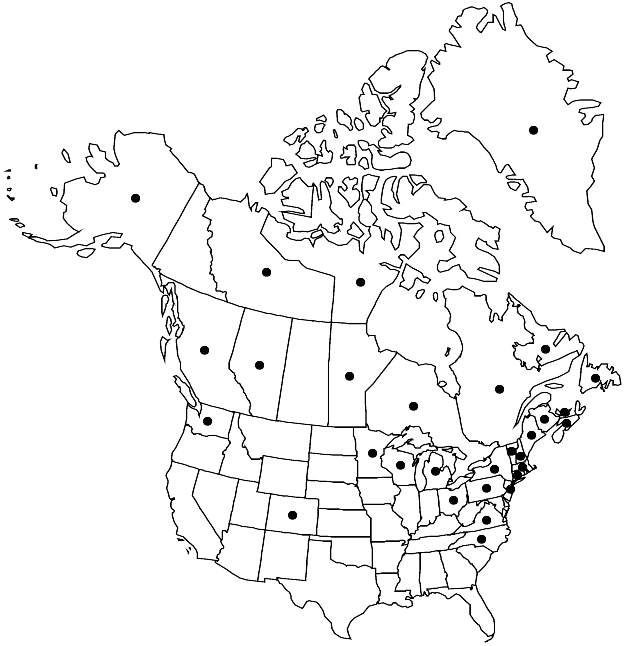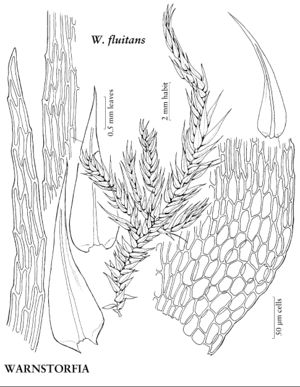Warnstorfia fluitans
Hedwigia 46: 310. 1907.
Plants green, yellow-green, brownish, brown-red, or rarely clear red in extremely exposed habitats. Stems with axillary hair distal cells 1–4. Stem leaves narrowly ovate to triangular-ovate, falcate or sometimes straight, concave or slightly so; margins denticulate, sometimes only in part or indistinctly; apex acuminate, not incurved; costa to 1/2–4/5 leaf length, occasionally double or shorter; alar region narrowly transversely triangular, supra-alar cells small, not forming region with alar cells.
Habitat: Mineral-poor acidic, sometimes nutrient-rich habitats, fens, bog pools, depressions in rock, rock with trickling water
Elevation: low to high elevations (0-3500 m)
Distribution

Greenland, Alta., B.C., Man., N.B., Nfld. and Labr., N.W.T., N.S., Nunavut, Ont., P.E.I., Que., Alaska, Colo., Conn., Maine, Mass., Mich., Minn., N.H., N.J., N.Y., N.C., Ohio, Pa., Vt., Va., Wash., Wis., South America, Eurasia, s, e Africa, Atlantic Islands, Indian Ocean Islands (Kerguelen Islands), Pacific Islands (New Zealand, Papua New Guinea), Australia.
Discussion
Warnstorfia fluitans is recognized by the somewhat indistinctly delimited transverse, more or less narrowly triangular alar regions in the stem leaves, and by the autoicous sexual condition. Warnstorfia pseudostraminea has alar regions that are sometimes transversely triangular (though more broadly so than in W. fluitans), but in some or most leaves the alar and large supra-alar cells together form an oval or rectangular region along the proximal leaf margins. Warnstorfia pseudostraminea has more or less straight to slightly falcate stem leaves, often with obtuse leaf apices having short cells, and the leaf apex is commonly hooked. However, neither of the last mentioned features are constant in W. pseudostraminea, and occasional (rare) specimens of W. fluitans have the same character states. Variety falcata (Drepanocladus fluitans var. uncatus) has been recognized, but because no type material seems to be extant, the status of this taxon cannot be evaluated.
Selected References
None.
